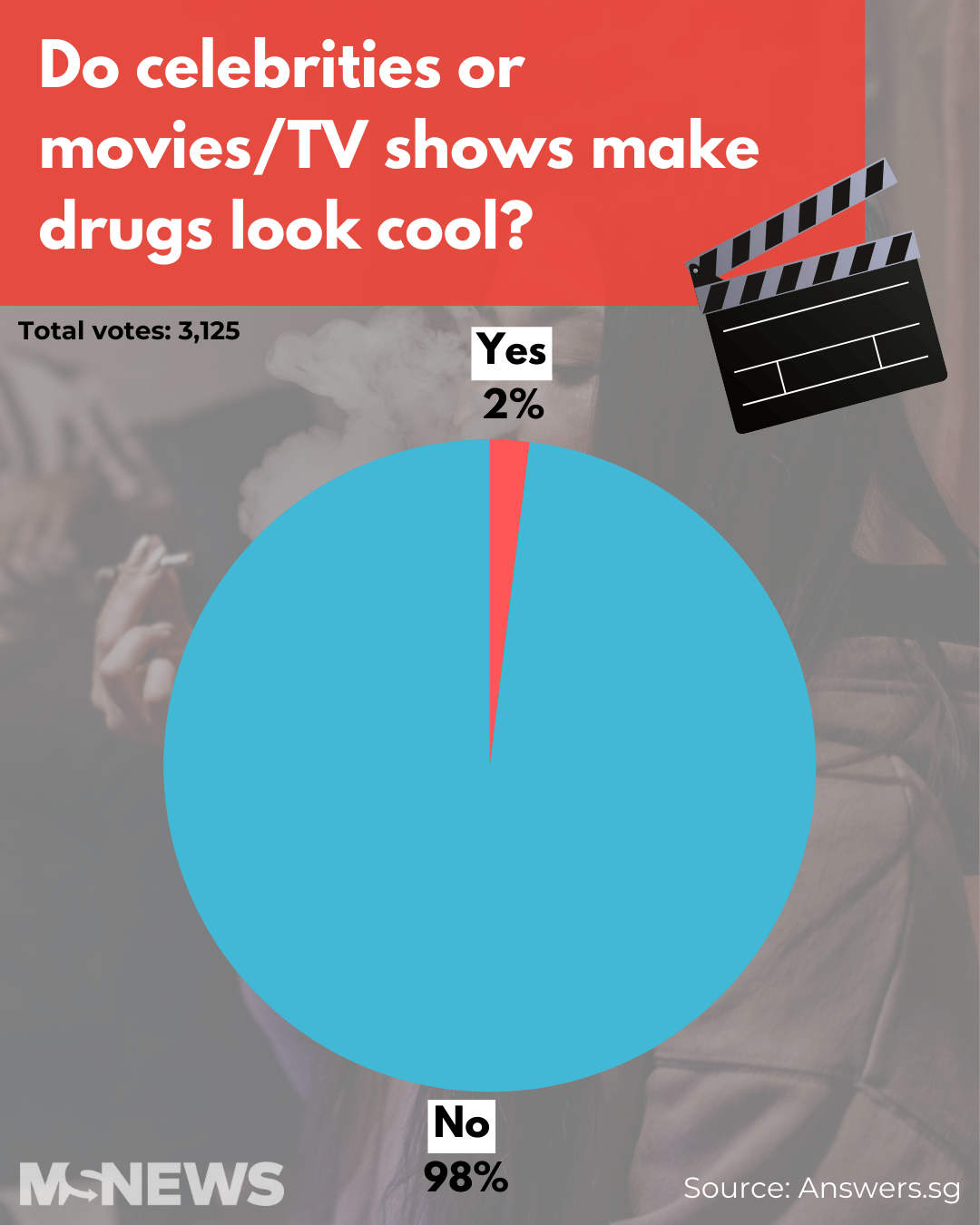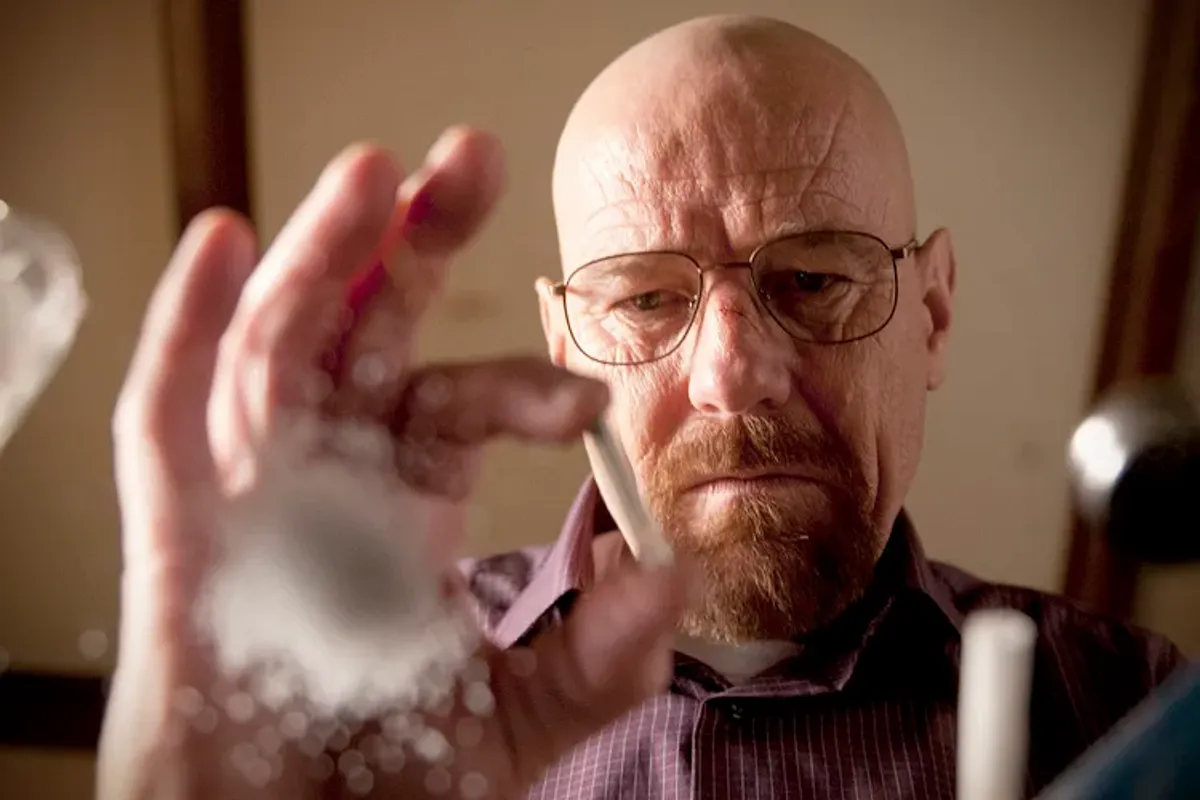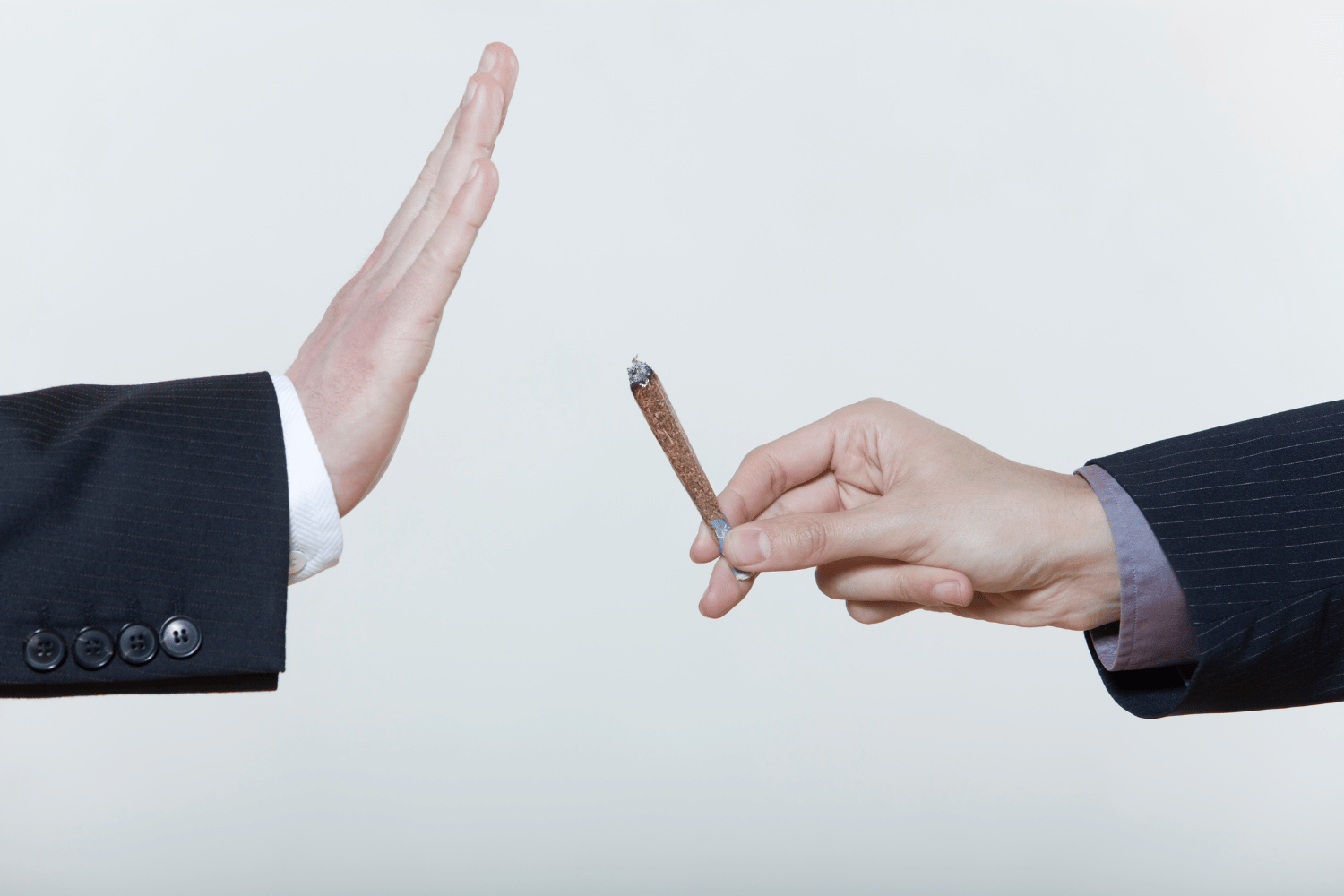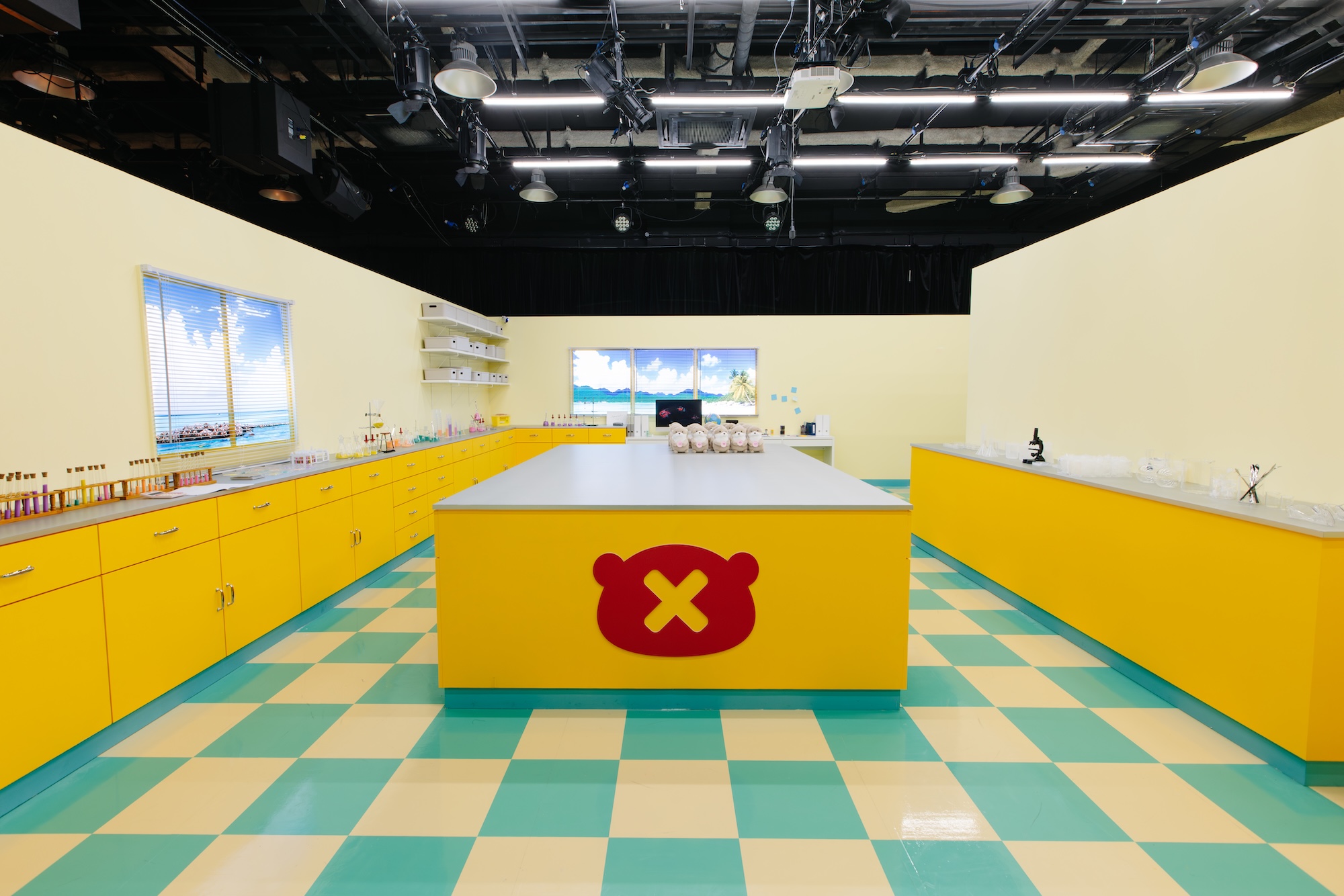Poll shows that 98% think everyone can resist drugs
A recent Answers.sg poll posed a seemingly simple question: “Everyone has the choice and ability to say no to drugs. Do you agree?”
The response? 98% of more than 10,000 respondents said “Yes”.

On the surface, this suggests an overwhelming confidence in willpower — the belief that anyone can simply wave off an illicit substance as easily as declining a pushy insurance agent at an MRT station.
A polite “no, thanks”, and the problem is solved.
However, the reality is far more complex.
This mindset stems from privilege — one that, often unknowingly, fosters indifference to the deeper realities of drug use.
Does pop culture make drugs look cool?
If resisting drugs is just about willpower, then one would expect people to be highly aware of what shapes their choices.
Yet, when another Answers.sg poll asked whether movies and celebrities make drugs look cool, only 2% of respondents agreed.

This reveals a critical blind spot: the illusion of immunity. Many assume that if they don’t feel influenced, they aren’t affected at all.
But while most of us are confident we won’t try drugs just because pop culture endorses them, how many can honestly say we don’t see recreational drug use as so common — at least in some parts of society — that it’s become the norm, inadvertently fostering indifference and permissiveness?
That’s the thing about influence — it doesn’t always announce itself. It’s subtle, creeping in and shaping perceptions in ways we hardly notice.
Cultivation theory suggests that prolonged media exposure shapes our perceptions of reality, aligning them with the portrayals we see.
When media consistently presents skewed or unrealistic depictions, like drug users as charming antiheroes or party scenes made more thrilling with a “boost”, viewers internalise these portrayals as normal, even desirable, without realising the influence.
Over time, this gradual exposure blurs the line between reality and media fiction.

Source: AMC via Salon
Even casual mentions of substances in songs and memes can have an effect.
Studies on the Mere Exposure Effect highlight how repeated exposure to something can breed familiarity, comfort, and even liking, even if the exposure is neutral or initially unnoticed.
So, for example, when cannabis is frequently referenced in a neutral or positive context, it exposes listeners to the idea repeatedly, making it feel more normal and acceptable, rather than harmful.
And when something feels expected, it stops feeling like a risk.
How privilege shapes attitudes towards drugs
For those who confidently reject drugs, it’s easy to dismiss these influences as insignificant. But that in itself is a privilege.
People who are certain they can say “no” often feel so far removed from the issue that they assume everyone has the same level of control.
With strong family and peer support, they have a built-in resistance to influence — a shield not everyone is lucky enough to have.
Because drugs are both out of sight and out of mind for them, it’s easy to assume that resisting is just a matter of personal choice.

Source: OSTILL on Canva, for illustration purposes only
This ties back to Heider’s Attribution Theory — the idea that people credit their own success to personal traits like willpower while overlooking how external factors, like social environment or life circumstances, shape others’ choices.
By assuming that resisting drugs is solely about character, they fail to consider the unique challenges others face.
It’s like a billionaire telling someone struggling with rent to “just buy a car” when they complain about a long, crowded commute.
Just as privilege blinds people to financial struggles, it also creates a false sense of security around drugs. Those who have never had to face these pressures assume willpower is enough, not realising how circumstances shape risk.
Before you know it, that cannabis-infused bubble tea in Bangkok doesn’t seem so bad. The hesitation fades. It’s just a drink, just a trip, just a bit of fun — just this once.
A slippery slope to something darker
But complacency is a slippery slope.
What once felt like a firm boundary starts to blur, shifting from “I would never” to “Why not?”

Source: Bangkok Post
The more exposure we have to something, the less alarming it seems. The more people around us indulge without immediate consequences, the easier it is to convince ourselves that the risks have been exaggerated.
And that’s how influence works. Not through pressure, but through quiet erosion.
One small compromise leads to another, much like the foot-in-the-door psychological technique: with each small concession, it becomes easier to agree to something larger down the line.
What once felt like a harmless decision or minor indulgence is gradually justified with each new instance. Gradually, the idea of “just saying no” feels outdated, even unnecessary.
By the time reality hits — whether it’s legal trouble, addiction, or the realisation that a “harmless” choice led somewhere darker — it’s often too late.
Breaking the cycle of indifference
It’s easy to assume we’re immune to influence, but the truth is, no one is.
Thinking “I can say no, so why can’t everyone else?” creates indifference, and indifference fuels permissiveness.
The less we question how pop culture normalises drug use, how peer attitudes shift, and how casual references make it seem harmless, the less risky it all appears.

Source: Pavel Danilyuk from Pexels on Canva, for illustration purposes only
That’s how influence works — not overnight, but through small, gradual shifts in what we see as “no big deal”.
But recognising this now gives us a choice: stay unaware, or pay attention.
Notice how influence shapes perceptions. Stay conscious of how attitudes change. And most importantly, help ourselves and those around us navigate these risks before it’s too late.
Step into the struggle at ‘The Trip’ escape room
Understanding influence is one thing. Experiencing it is another.
That’s exactly what ‘The Trip: What Happened in Larspura?’, an immersive escape room experience at Stamford Arts Centre organised by the Central Narcotics Bureau (CNB), is designed to do.
Step into the world of Ben, an ordinary youth slowly caught in the web of influence, peer pressure, and shifting perceptions.

Image courtesy of CNB
At ‘The Birthday Party’, you’ll interact with different types of friends: the ones who encourage everything, the ones who disappear when things go wrong, and the ones who stay silent.
Their choices — and yours — determine how the night unfolds.

Image courtesy of CNB
Inside ‘Ben’s Brain’, you’ll see how small choices spiral into addiction and how personal struggles, such as a breakup, could make someone more vulnerable than they ever realised.

Image courtesy of CNB
Finally, in ‘Operation Larspura’, you’ll uncover how insidious marketing, pop culture, and corporate influence quietly shift attitudes towards drugs, making dangerous choices seem normal.

Image courtesy of CNB
Each room serves as a wake-up call — a reminder of how subtly influence creeps in and how quickly risks we once dismissed become commonplace.
Here are the event details:
‘The Trip’ escape room
Address: Stamford Arts Centre, Waterloo Street, #155, Singapore 187962
Dates: 28 Feb – 6 March
Operating hours: 12pm to 9pm (weekdays), 10am to 9pm (weekends)
Nearest MRT station: Bugis
Admission is free, but reserving a slot in advance is recommended.
For more details and bookings, visit the website here and follow this Instagram account for more exciting updates.
What we see and hear shapes us, often without us noticing. But by staying aware of the messages around us and how attitudes shift, we take better control of our choices — and sometimes, that awareness is exactly what helps someone else before they even realise they need it.
This article was brought to you in collaboration with the Central Narcotics Bureau of Singapore.
Featured image adapted from Aflo Images on Canva, for illustration purposes only.








